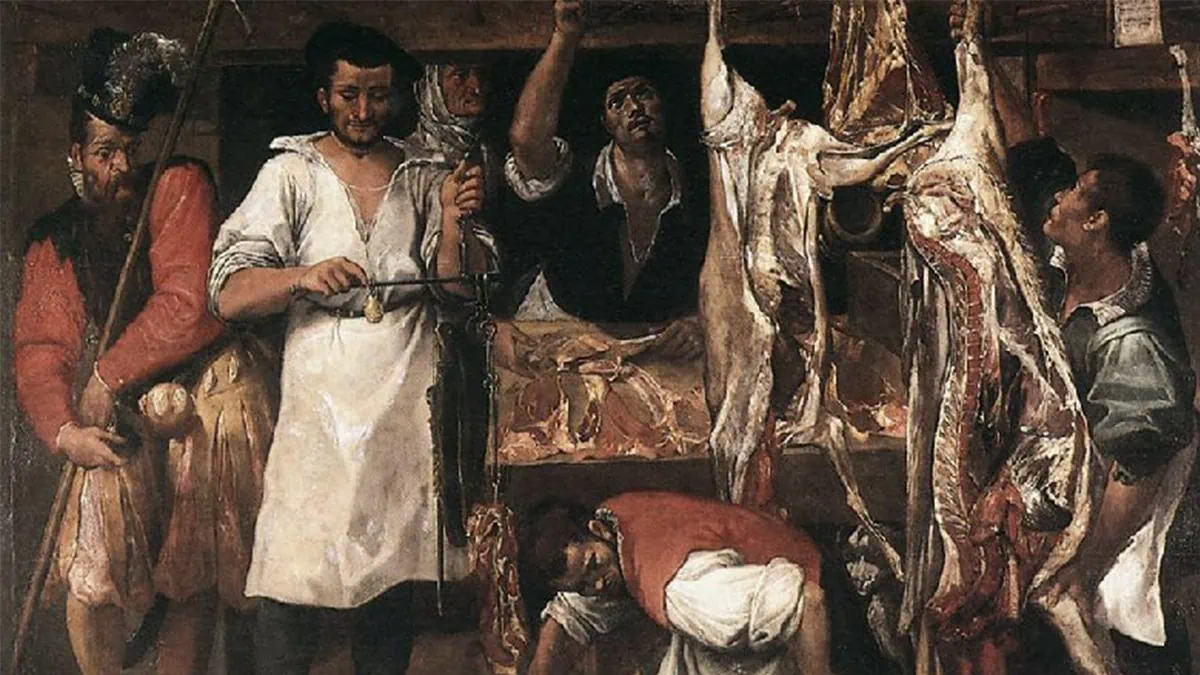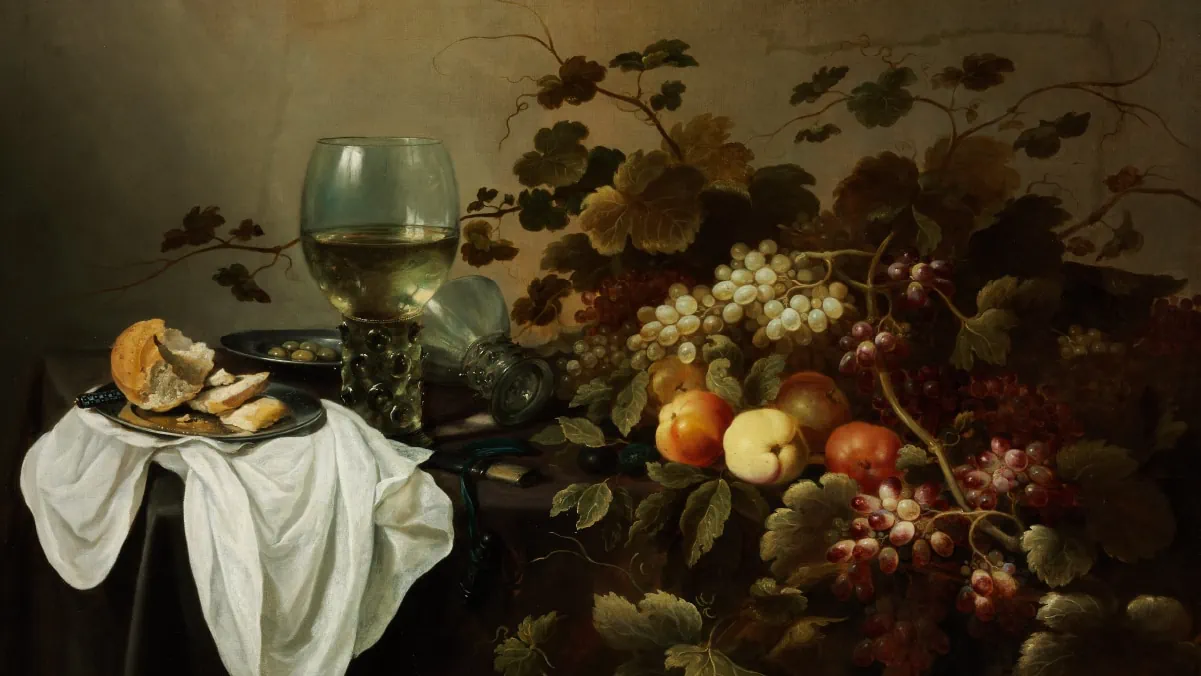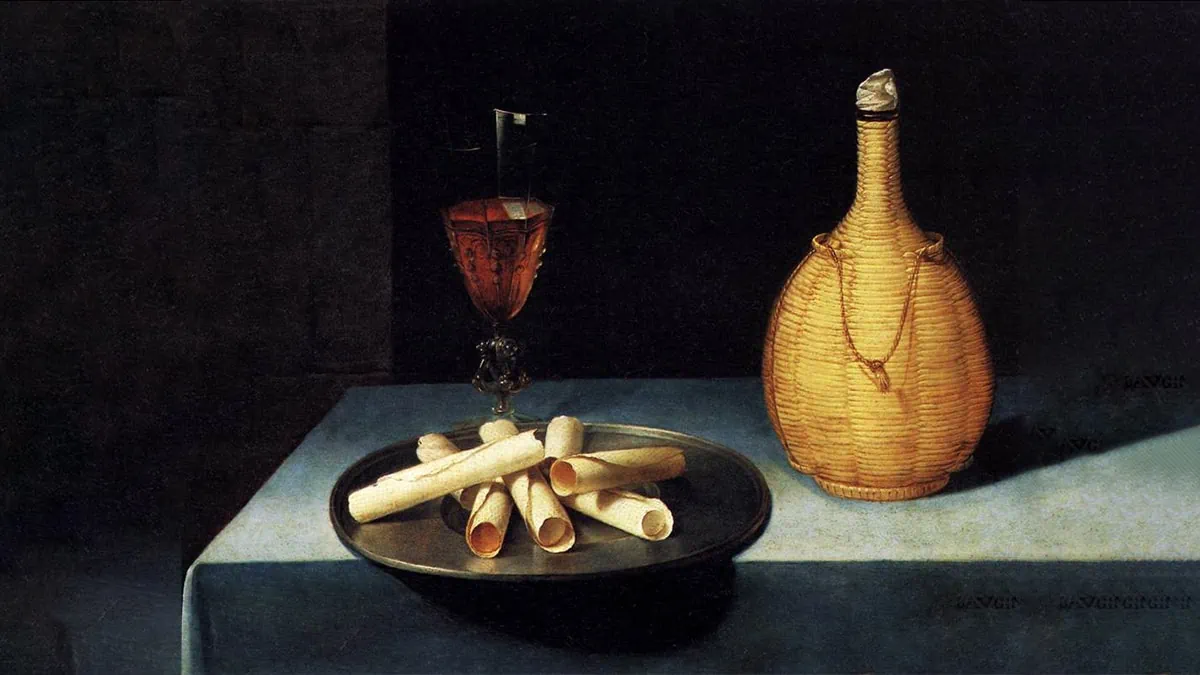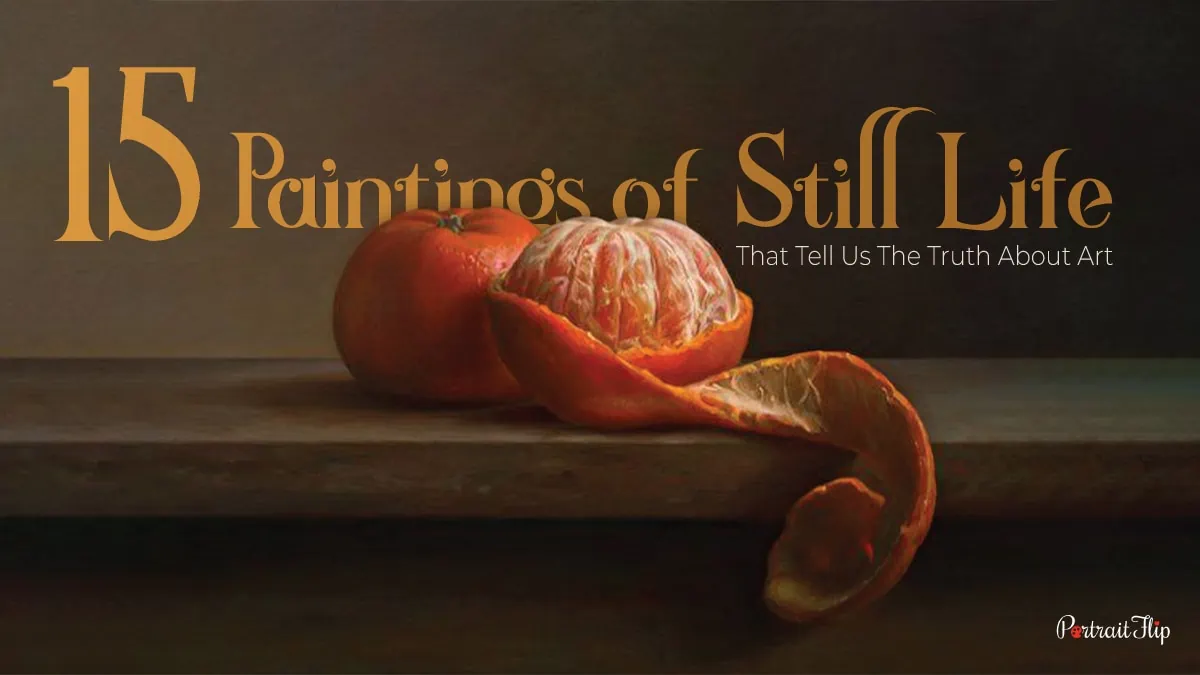Paintings of still life!
Does this term immediately strike an image of fruit drawings and flowers on the side?
If yes, then let me tell you, we are going to discuss some of the famous paintings of the still life genre!
So what are still life paintings?
They represent life and death in such a way that viewers are left awestruck.
Still life compositions are so simple yet detailed that a viewer might get confused about what the concept behind the painting was.
Still life is an art genre from the earliest centuries that dates back to the Egyptian and Roman periods.
Whether it be in French (nature morte) or Italian (natura morta), this art genre literally translates to dead nature.
It is believed that in early periods, objects were used as religious subjects in an art form.
During the Middle Ages, the portrayal of inanimate objects was discovered, and it was suggested that they could be arranged in a systematic way as well.
Although paintings of still life may appear as simple as a plate full of pretzels on a table, trust me when you get to know the backstory!
You will be left in amazement. Also, the art of still life is something that takes time to be curated!
Now, the biggest question is, “What is still life in art?” So, to understand that, let us take a look at some of the paintings of still life by famous artists.
Table of contents
What is Still Life? And What is so Special About Them?

A table full of objects such as books, candles, hourglasses, and delicious food is arranged one after another.
Isn’t it all too tempting? Well, this is what still life is about!
But wait till you take a closer look at the subjects of still life food painting.
Imagine a basket full of them, but alas! The fruits are rotten.
I know it is sad, but it goes deeper than we think. It goes beyond a human’s mind and life.
This is what famous artists portrayed through still life, and they proved that paintings of still life were not just a mere piece of art.
Paintings of still life were like a way of expression, a freedom of choice, and a way of stepping into depth as an artist.
Still life in art pays attention to the vastness of minimalism, which, after all, provoked the artist to portray the message with fewer resources.
Because if you observe the paintings, you can easily see that there is no element in the whole painting that seems to be moving.
Still life was used by artists to portray the dangerous nature of humans’ addictions and the concept that everything in life is temporary.
Birth of Still Life Paintings: The History

Think about the cavemen (Egyptians) and the way they restored their legacy!
By engraving the walls and by some of the most influential and beautiful paintings of still life on the walls of their caves.
It was around 5,000 years ago that the Egyptians came up with the concept of easy still life paintings.
Paintings of still life are not just a genre in the art world; they literally span art, cover art history, and symbolize the life of an artist.
Primarily, when the Egyptians started using it, they used it to symbolize and immortalize the ones who lost their lives.
This was also a fact that as soon as the concept of modern still life paintings started growing, it also gave birth to the topic of vanitas.
There are a lot of hidden symbols in these still life paintings, such as seafood, which represents luxury and the pleasures of life, and oysters, which represent lust, whereas tulips represent nobility.
Still life also hints at illusionistic naturalism. Flowers represented passion, humanity, and holy spirits.
A lot of religious symbolism and a focus on attention were used in the paintings of still life.
Renaissance Era and the Still Life Paintings

When the world was heavily influenced by art, that’s when the era of the Renaissance took over.
Many renowned artists started developing the art culture at that time.
When people started to realize the worth of the art created during that period, they started to decorate their homes with the famous still life paintings.
So, here are some of the famous paintings of still life from the Renaissance era.
Flowers in a Jug by Hans Memling

This painting of still life on the reverse is by one of the first independent still life artists, Hans Memling.
Although it seems like a “vase of flowers” drawing, when you take a closer look, this composition has religious significance as it contains references to Christ and the Virgin Mary.
This artwork is one of the famous Dutch still lifes with flowers, a jug, and a rug!
The jug, which is also referred to as the Maiolica jug, has a monogram of Christ on the front, and the flowers in it refer to the Virgin Mary.
Lilies refer to Mary’s puberty, and the flower of irises refers to her role as Queen of Heaven.
Also, during the phase of passion, her role was that of Mater Dolorosa.
The small are associated with the Holy Spirit, and the rug in the picture is one of the eastern types; the textile word for that was Memling rug.
This painting of a still life is housed in the Museo Nacional Thyssen-Bornemisza, Madrid.
Suggested Read: Famous Paintings of Jesus
Great Piece of Turf by Albert Durer

The work is considered one of the classical paintings of still life in Durer’s studies, which is related to nature and its realism.
He created this in Nuremberg in 1503, when he was just 24-years-old.
One of the famous still life paintings, this depicts an unarranged group of wild plants in a field. The wild plants include dandelions and greater plantains.
This watercolor painting shows a large piece of wild plants, which are drawn and uprooted by Durer in such a way that the viewers can take a good look at them.
This artwork shows a great depiction of realism, and the portrayal of natural objects is done phenomenally.
Now housed in the Albertina Museum in Vienna, this painting is an exemplary work of art.
Fruit Basket by Michelangelo Caravaggio

One of the most famous paintings by Caravaggio is a phenomenal work of still life.
This piece of art tempts the viewers to seek out more information and is one of the paintings that has survived to this date.
At first glance, a viewer might see a set of beautifully arranged fruits in a basket, which looks surreal.
But on closer observation, you might see how the fruits are almost rotten and dewy, and the leaves are wilted as well.
Also, the intricate detail that Caravaggio did not miss portraying in this famous painting of fruits was, the balance in life, which is very important.
He conveyed this message by making the fruits seem like they were almost falling off the edge of the basket.
This painting of a still life can be viewed at the Biblioteca Ambrosiana in Milan.
Suggested Read: Sunflowers by Van Gogh
Butcher’s Shop by Annibale Carraci

In 1580, a butcher named Guild commissioned Annibale to compile a still life painting for his family.
He wanted to commission this painting as a sign of the unity of his family.
It is believed that Guild used his own family as the muse for this painting.
Vicenzo Campi and Bartolomeo Passarotti influenced Carracci to paint scenes of everyday life.
Butcher’s Shop is one of the famous contemporary still life paintings that was somewhere restored, and a few corrections were made to it!
When the painting went under the x-ray, several changes were made to the details of the painting.
This painting showcased the involvement of his family in the butchery industry for a long time and became a relevant part of their lifestyle.
This painting of still life is housed in the Christ Picture Gallery, Oxford.
Kitchen Scene by Diego Velasquez

This painting by the famous still life artist Diego Velasquez was painted in the Seville period, when the artist completed his apprenticeship with Pacheco.
Velasquez was well-known for his ‘bodegones’ genre of painting, which revolved around scenes of cooking and the kitchen.
This painting of still life portrays a snippet from the Gospel of Luke, in which Jesus visits Martha and her sister Mary.
The lady who can be seen sitting next to Jesus on the ground is Mary, and the one who is cooking in the kitchen is Martha.
It can clearly be seen that Martha is sporting a face of anger or irritation, as she wishes to be in Mary’s place.
She can be seen preparing a meal for Jesus with fish, eggs, ginger, and garlic.
This beautiful still life painting can be viewed in the collection of the National Gallery, London.
Dutch Paintings Featuring Still Life

One of the biggest centers for some of the most enthralling art movements that took place over the centuries was the Netherlands.
It housed some of the most famous Dutch still life painters who mastered the style of the genre.
As soon as the Netherlands snatched their independence from Spain, they went through a ‘Golden Art Age’, which also supported artists all around the world.
This also supported the still life artists and the style in general. The intricate floral designs were especially popular.
The way everything was presented in the era showcased that every object had a symbolic meaning behind it.
This also gave birth to the concept of Dutch Realism.
Suggested Read: The Milkmaid by Johannes Vermeer
Dessert by Willem Kalf

This impeccable piece of art was curated by Willem Kalf. As he worked on this painting, he used the elements of light and dark.
The scene in the painting depicts the breakfast table or a dish freshly served.
This is a hermitage painting that screams luxury at its finest.
You can see a dark background, and a ray of light is piercing through the subjects of the painting.
The light effect makes the objects, especially the bowl of fruits, pop out of the darkness.
Kalf was known for displaying objects in a poetic language of art.
That can evidently be seen in this exemplary work of still life, as it explains the naked reality that luxuries in life are temporary.
In this painting of still life, you can see silver platters, fresh fruits, and vessels filled with wine.
Besides, you can also see that it has an expensive oriental carpet under the platters.
This still life work is now housed in the Hermitage Museum, in St. Petersburg, Russia.
Still Life With Fruit by Pieter Claesz

This is one of the most influential still life oil paintings created by Pieter Claesz and Roelof Koets.
They both were friends from a very young age, and they have testified in many cases together.
They both lived in Harlem and have dated and signed this artwork.
The right side of this painting, which features foliage and grapes in a darker context, was created by Koets.
On the other hand, the playful and bright side of the painting was created by Claesz.
We can see a roemer filled with wine and fruits lying around. The foliage, apples, and grapes can also be seen rising from the dark side.
The fruits and the wine have a golden effect on them, which also marks the fact that Pieter was one of the most important artists of the Dutch Golden Age.
He, along with Koets, created this painting when the Netherlands was experiencing a cultural and economic bloom.
This was the moment when the paintings of still life became a symbol of luxury, and the objects in the paintings also had an importance of their own.
This painting depicts the rise from the darker side to the bright side of prosperity and wealth.
This painting of still life is housed at the Szépmûvészeti Múzeum, Budapest.
Le Dessert de Gaufrettes by Lubin Baugin

One of the most intricate paintings of still life was made by Lubin Baugin in 1630-35.
This is an exemplary painting that was made on a wooden base with oil paint. The artist has also signed the work.
Lubin Baugin has used his skills in chiaroscuro to bring the painting to life.
Because of the use of the darker shades in the background and the lighter shades in the front, the subjects tend to grab the attention of the viewers from the first glance.
Lubin Baugin has also showcased his knowledge of geometry and color palette as he has drawn the wafers, the flask of wine, and the table as well.
In this painting of still life, we can see a white tablecloth lying under the plate and the glass of wine.
The way Baugin portrayed the plate of wafers, it almost looked like he was offering it to the viewers.
This painting showcases the lavish lifestyles that the rich people carry, while the struggles of the poor have been lost in the darkness.
To your surprise, this commendable piece of art is one of the paintings in Louvre museums.
Vanitas Still Life by Maria Van Oosterwijk

This painting of still life was created by Maria Van Oosterwijk, who was known for her vanitas revolving around floral designs.
Vanitas is a genre of still life that represents the journey towards death.
In this painting, Maria has elaborated and talked about how people react when approached by death.
You can see a globe, which represents the world in which we live.
The book, which is in a messy condition, represents the equilibrium of life, and the butterfly that can be seen at the top illustrates how tempting it gets.
We can also see a skull in the background, which represents that life is temporary.
Thus, with this painting of still life, Maria, one of the most famous female painters in history, depicts that nothing in this life is permanent, not even life.
This painting is housed in the private collection of the Kunsthistorisches Museum in Vienna.
Still Life by Frans Snyders

Still life with a swan was made by Frans Synders, who was an assistant to Peter Paul Rubens.
This scene represents the palace in which the Spanish and Flemish nobility lived.
In this painting of still life, we can see a group of animals lying on a table, and a servant can also be seen entering the frame.
Frans has painted this work of art to represent the neverending earthly joy.
In this painting, we can also see that Frans has made sure to include and emphasize the earthly goods, which also points towards the never ending celebration.
Even though the painter has drawn a lot of animals and birds in the frame, none of them look out of context.
Frans has used symbolism in this painting, and that can be understood as the birds represent air, the seafood represents water, and the fruits represent the earth.
The figs, which the servant is seen carrying, represent fertility.
The use of these vast symbols and the constantly moving subjects represents how the Flemish people love their country and how they celebrate it.
This painting of still life is safely housed in the Pushkin State Museum of Fine Arts. Moscow, Russia.
Modern Art And Still Life?

As soon as the modern art era came into the art scene, that was the moment that drifted the original art away from its original form of realism.
With this happening in the art world, slowly and gradually, the art of still life, which revolved around the concept of realism, started to vanish.
The modern and traditional still life paintings had a vast difference, which was clearly visible and also reflected through the brushstrokes of the artists.
The modern art movement with still life had other movements indulging as well.
When icons and cubist artists like Pablo Picasso and Georges Baraque joined in and took on this genre, that was when this movement started to rise to fame.
Take a look at some of the works that showcased the variety of modern art mixed with still life.
Dishes and Fruit by Henri Matisse

It is one of the most prominent works of abstract still life, by Henri Matisse, which brought fame and fortune his way.
It is a magnificent collection of colors on a canvas and is also a very notable painting of still life, as it has inspired other young and talented artists.
Henri Matisse, who was one of the leading faces among the famous french artists, has used a bright color palette in this painting.
And the way he has created this painting keeps the viewers engaged.
This painting is housed in the State Hermitage Museum in Saint Petersburg.
Violin And Candlestick by Georges Braque

Georges Baraque was one of the most influential artists, and when he painted the violin and candlestick, it brought a change in the still life movement.
It is considered to be one of the most amazing Cubist paintings. It was one of the paintings that left Baraque in confusion.
He was not sure whether he’d be able to paint with cooler hues, and that was the reason he composed the paintings with darker hues.
He used flat lines and bland tones with objects to frame the painting.
It also created the illusion that there was something more to it, and it often left the viewer confused.
This was a milestone in the artist’s life that established him in the era of cubism.
This painting of still life is housed at the San Francisco Museum of Modern Art.
Still Life with Chair by Pablo Picasso

Pablo Picasso created this oil painting of a still life in 1912, and it looked a bit chaotic at first glance.
It is also considered to be the first Cubist collage, which he created by pasting an oilcloth.
Even though the painting seems distorted at a glance, a knife and some pieces of citrus fruit can easily be seen.
When we look more closely, we can also see a glass of wine, and the fruit is supposed to be that of a lemon.
A white napkin can also be seen resting on the cane of the chair.
This painting also raised the question of how it was actually related to still life.
Picasso explained the elements, and it is now one of the most famous still life artworks to exist.
It is also a part of the analytical cubism artworks by Picasso.
This painting of still life can be viewed at the Metropolitan Museum of Art, in NYC.
Memento Mori: A Myth?

The concept of Memento Mori in art is used in the paintings of still life and mostly in the vanitas, which relate to life.
Memento mori specifically means an object that serves as a warning or reminder of death.
Skulls, blown up candles, hourglasses, bubbles, and rotten fruits all depicted the temporary nature of life.
These kinds of paintings were used to focus on man’s nature, remember mortality, and remember sins.
Though it may appear simple, still life art portrays complex themes.
The concept of memento mori implies that all living things that get life eventually die.
So what I personally think is that the concept of Memento Mori isn’t a myth; it is a fact that whatever comes to life eventually, with time, has to die.
Finalē
This was all about some of the exceptional paintings of still life.
Even though these paintings are often underexposed, they make sure to leave a mark on the viewer’s mind!
Also, paintings of still life have played an important role in the art world and in some of the most important eras of art.
I have tried my best to cover some of the most talked about still life paintings.
Still life paintings, or vanitas, were often used in Dutch households to decorate their homes and were a symbol of luxury.
Now, the time may have changed, but you can also get yourself a replica of some of the most famous paintings of all time!
And that too, at affordable prices, as our artists make sure to complete the painting with perfection, which will definitely leave you awestruck!
If you wish to get one made especially for yourself then,
Author’s Note
Thank you for reading this article about paintings of still life.
I will feel glad and appreciated if you leave feedback or views in the comment section!
Drop by and make sure to say hi to us on our socials!
Make sure to follow our social media accounts: Instagram, YouTube, and Pinterest.
Ciao!
FAQs
Paintings of still life are important because the artist who painted them reminds us that everything in life is temporary and materialistic things are just a source of pleasure.
It is believed that the Egyptians were the first to use the concept of still life, but officially, the concept of paintings of still life came into light in the 15th century.
Here are five artists who were well-known for their still life paintings, Paul Cézanne, Caravaggio, Pieter Claesz, Henri Matisse, and Vincent Van Gogh.




